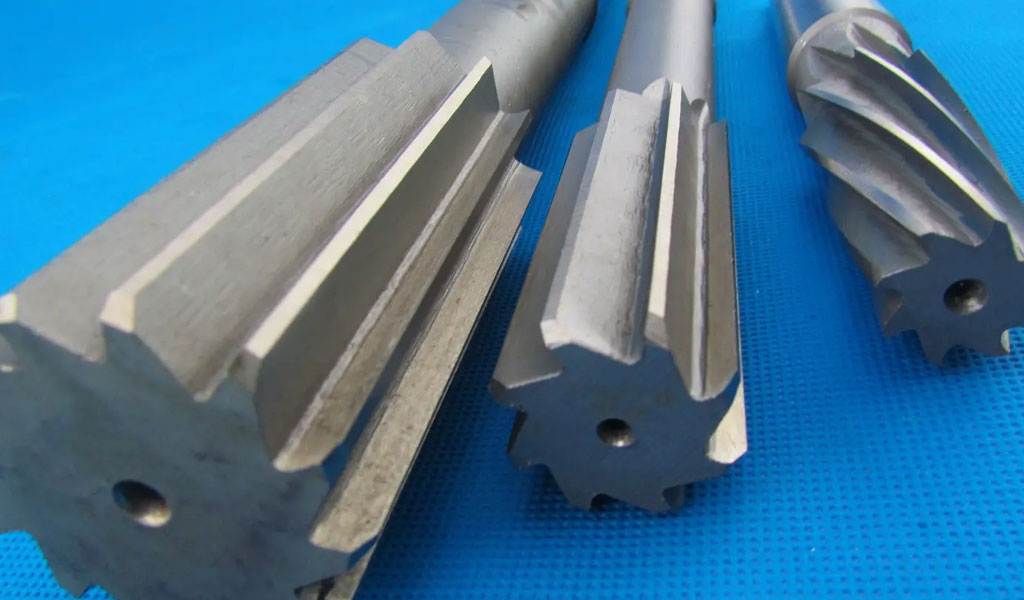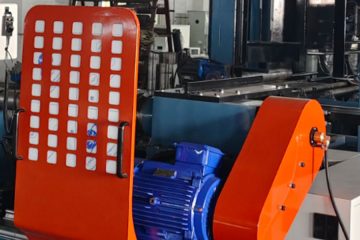1 Application range, classification and advantages and disadvantages of reamers

1.1 The reamer is a guide-based hole processing tool for small depth of cut, mainly used in
- (1) Holes with diameter tolerance ≤ IT8;
- (2) Surface roughness requirements (usually ≤ Rz12);
- (3) Holes with roundness tolerance requirements;
- (4) Holes with cylindricity requirements;
- (5) Steps Holes (different diameters on the same axis);
- (6) series holes (diameters on the same axis) have high coaxiality requirements.
1.2 Reamer type
Main points: multi-edged reamer and reamer with guide strip. The axial and radial positions of each cutting edge of the multi-blade reamer are the same, the tool diameter is not adjustable, and the tool can be reground. The diameter of the reamer with guide strips can be adjusted, at least two guide strips. In mechanical applications, multi-edged reamers are considered to be more cost-effective.
1.3 Advantages of multi-edged reamers
- (1) High cutting speed;
- (2) Simple and reliable design;
- (3) Easy to operate;
- (4) Can be reground (only for uncoated);
- (5) Installation and use errors are generally not result in complete damage to the tool.
1.4 Disadvantages of multi-edged reamers
- (1) The quality of the processed holes is slightly poor;
- (2) The processing of stepped holes will be limited;
- (3) The series of holes and holes with high coaxiality requirements cannot be processed.
2 Selection of reamer and technical conditions for use
The reamer has a large number of teeth, good guiding performance, large core diameter, good tool rigidity, and small machining allowance. It can obtain IT9-IT7 grade diameter and dimensional accuracy, and the surface roughness of the inner hole can be controlled at Ra1.6-0.8 mm is even better.
2.1 Selection of reamer
Basic principles: Usually, those with a diameter greater than 12 are welded, and those with a diameter less than 12 are solid carbide; usually, the number of teeth is evenly (uniformly) distributed, but the distribution of chip flutes is uneven; the groove type is determined according to the application, blind The hole is a straight groove, and the through hole can be a left spiral groove. Determination of tolerance: Unless otherwise specified, the reamer is manufactured according to the tolerance m6. In practice, the actual size of the hole reamed by the reamer depends on many factors, including: (1) the type of material to be processed and the machining allowance; (2) the cutting angle of the reamer; (3) the conditions when the reamer is used ; (4) Clamping and operation method; (5) Lubrication condition.
If the tolerance of the hole is given, the above factors should be considered when determining the special tolerance of the reamer for processing the hole. The upper and lower limits of the reamer tolerance can be determined according to the processed hole. When the tolerance of the hole is IT: the diameter of the reamer The upper limit size is equal to the maximum diameter of the hole minus 0.15IT. The value of 0.15IT should be rounded to 0.001mm; the lower limit of the reamer diameter is equal to the maximum diameter of the reamer minus 0.35IT. The value of 0.35IT should be rounded to 0.001mm.
2.2 Technical conditions for the use of reamers
Reamer material: The handle is made of 40Cr or alloy steel with the same performance. The tool materials are mainly divided into: high-speed steel (suitable for steel parts), hard alloy (suitable for steel parts and castings), diamond PCD (aluminum alloy), CBN (difficult to process Material).
Position tolerance of the reamer: 0.015mm for the cutting part; 0.01mm for the calibration part; 0.015mm for the shank (radial runout to the common axis). Hardness of reamer handle: 30HRC-45HRC. Reamer clamping: high-precision runout, tool runout is less than 0.01mm, high stability, suitable for clamping with high-precision spring sleeves, hydraulic tool holders, thermal expansion sleeve tool holders, compensation tool holders and other tools.
Reamer processing parameters (recommended):
Steel parts and castings: VC=50-100m/min, f=0.2-0.8 (increase with diameter)
Aluminum alloy: VC=200-1000m/min, f=0.2-1.0 (increase with diameter)
3 Failure mode analysis and countermeasures of reaming
The main factors affecting the reaming quality of the reamer:
- (1) The geometric dimensions of the reamer, including the diameter of the reamer, the number of teeth of the reamer, the cutting cone angle, the rake angle and back angle of the reamer, the width of the margin, and the amount of reverse cone;
- (2) Reaming amount, including reaming allowance, cutting speed and feed rate of reamer;
- (3) Other factors, such as machine tool spindle accuracy, workpiece clamping deformation, cutting fluid, etc.
Several main failure modes of reaming:
(1) Causes and solutions for aperture increase:
- 1) The outer diameter of the reamer is too large or the coaxiality of the reamer is too large – check the outer diameter of the reamer and the coaxiality of the cutting edge of the tool relative to the main shaft;
- 2) The reamer Tool main declination angle is too large – reduce the main declination angle appropriately;
- 3) The cutting speed is too high, the feed rate is improper or the machining allowance is too large – reduce the cutting speed, adjust the feed rate or reduce the reaming allowance;
- 4 ) Adhesive cutting tumor on the reamer blade – use oil stone to remove the cutting tumor, add internal cooling holes to the reamer, and choose a cutting fluid with better performance as the coolant.
(2) Causes and solutions for the smaller hole diameter:
- 1) The design value of the outer diameter of the reamer is too small – check the outer diameter of the reamer;
- 2) The leading angle of the reamer is too small – appropriately increase the leading angle;
- 3) The cutting speed is too low, the feed rate is improper or the machining allowance is too small – appropriately increase the cutting speed, adjust the feed rate or appropriately increase the reaming allowance;
- 4) the reamer is worn – replace the reamer, set the tool Replacement plan; 5) The workpiece is too thin, and the elastic recovery of the inner hole after reaming makes the hole smaller–design the reamer to take the value of the workpiece into consideration.
(3) Causes and solutions for the out-of-round inner hole:
- 1) The reamer is too long, the rigidity is insufficient, and vibration occurs during reaming—use a reamer with unequal tooth pitch or shorten the length of the reamer;
- 2) Reaming Allowance deviation – control the hole position error in the pre-machining process;
- 3) The lead angle of the reamer is too small – increase the lead angle;
- 4) The reamer margin is narrow – select a qualified reamer.
(4) Causes and solutions for the poor roughness of the hole surface:
- 1) The cutting speed is too high – reduce the cutting speed;
- 2) The cutting fluid is not selected properly – choose the cutting fluid according to the processing material;
- 3) The reaming allowance is large – ―Appropriately reduce the reaming margin;
- 4) The reamer margin is too wide-repair the width of the margin;
- 5) Poor chip removal when reaming-reduce the number of reamer teeth, increase the chip space or use a reamer with an inclination angle , so that the chip removal is smooth;
- 6) There is built-up edge on the cutting edge-use oil stone to repair or replace the reamer.
It is difficult to fully control and prevent processing quality problems in daily use. Only by comprehensively analyzing “man, machine, material, method, environment, and measurement” to find out the root cause of the problem can it be solved one by one.
4 Epilogue
In mechanical processing, reamers are widely used in semi-finishing and finishing holes. The accuracy and surface quality of holes depend largely on the selection, design and cutting parameters of reamers. Only by fully understanding the selection of reamers and possible failure modes can we prevent them and ensure product quality and batch production stability.


